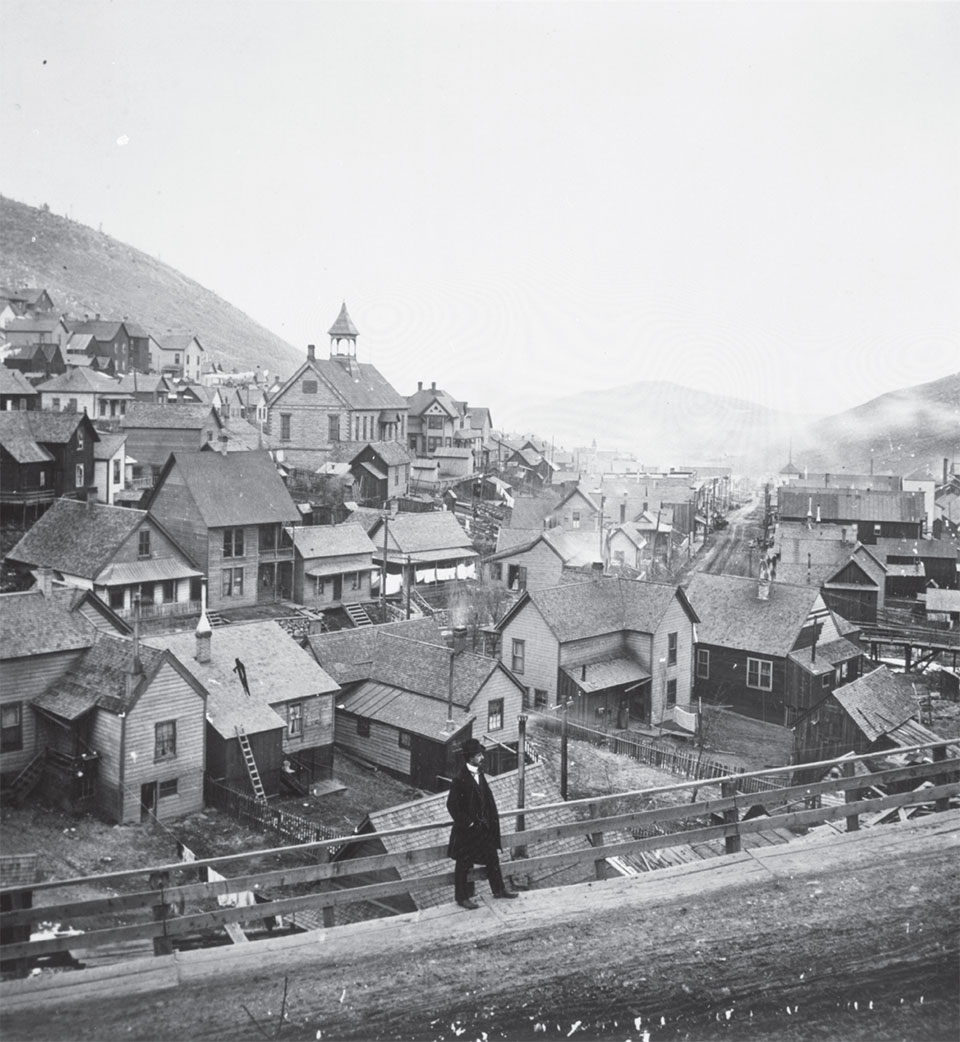How Park City Became a Luxury Destination
by Cassidy Mantor
Above: Photo Credit Park City Museum
Before Park City was one of the best ski towns and a luxury real estate destination, the Ute and Shoshone people lived on the land and Mormons settled it. In the late 1800s, federal troops were sent into the region to monitor the Saints because the government was concerned that they might side with the Confederacy and disrupt the mail during the Civil War. In late October, the commanding officer sent soldiers up Big Cottonwood Canyon to look for minerals. Park City’s mining history began when they discovered silver. They would begin mining in the spring.
At the same time that the town was beginning to buzz with mining, the Transcontinental Railroad was completed and ran through Promontory, Utah. Many settled in Parley’s Park, now known as Kimball Junction. Mormon pioneers George and Rhonda Snyder named the area Parley’s Park City, which was subsequently shortened to Park City.
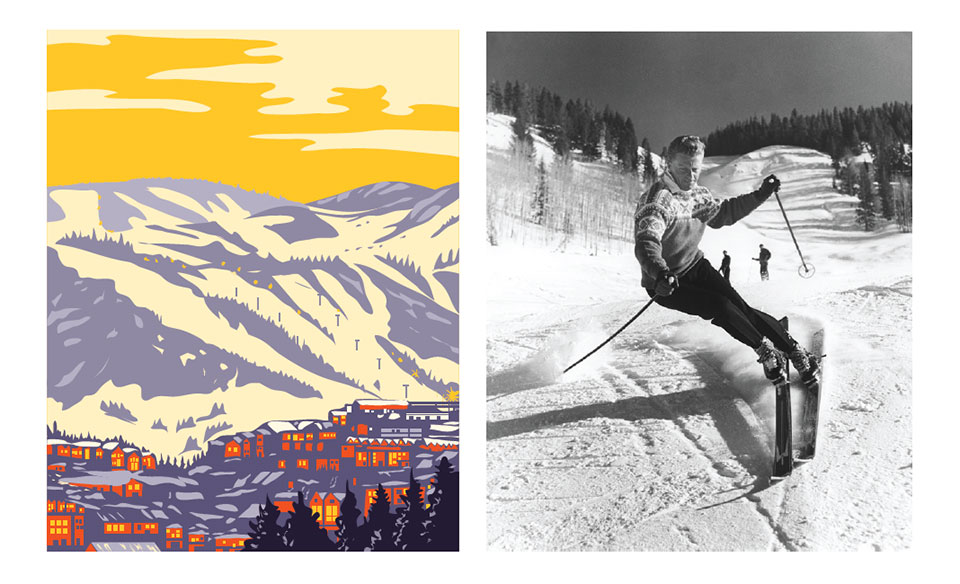
Mining
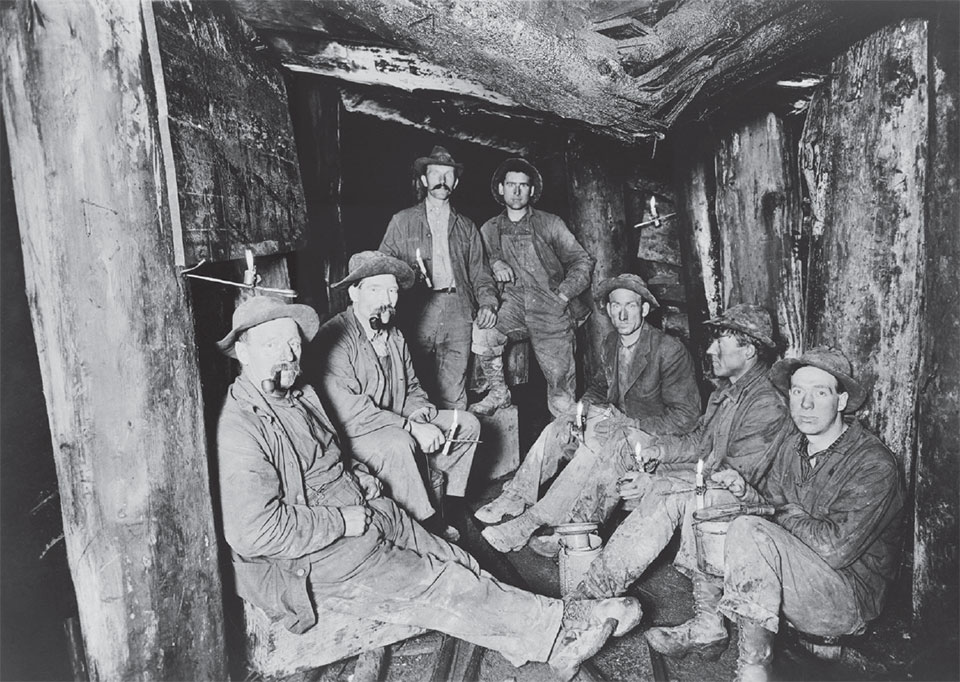
Old Town was a central hub as mining flourished in the late 1800s. In 1872, Canadian prospectors named a particularly bountiful silver claim Ontario. It was subsequently bought by George Hearst (father of William Randolph Hearst) for $27,000 and made over $50M during its lifetime. Over the next decade, more silver was discovered, as well as gold and lead, and infrastructure developed. Phone lines and public schools opened, The Park Record began publication, and a railway expansion spur linked Echo to Park City. In 1889, the town’s population was 5,000. The Crescent, Anchor, Mayflower, and Silver King were some of the largest mining operations.
When Utah became a state in 1892, the population in Park City was 7,000. Two years later, it had grown by another 1,000 people. In 1898, Park City had about 8,000 residents when a fire devastated Park City and caused $1M in property damage. Close to 200 of the town’s 350 structures were destroyed and people were left homeless. It was a low point for the town amid its growth, and some residents left to fight in the Spanish American War.
But they rebuilt. Silver prices were on the rise because of the war and many buildings were subsequently built using brick and stone to be fire-resistant. Within 18 months, the town was thriving again. When Prohibition began in 1917, bootleggers brought alcohol to Utah from Wyoming, where it was still legal. Home-brewing became more popular and within four years Park City claimed 23 “soft drink parlors” (bars).
In 1918, the influenza epidemic struck. Masks were required by law, schools closed, and labor unrest caused workers to strike and mines shut down. In 1929, the stock market crashed. Facing declining silver prices from WWI, the Great Depression, and WWII, by July 1, 1949, mining came to a halt. All mines closed and Park City turned into a ghost town. The population contracted to 1,150 people by 1951.
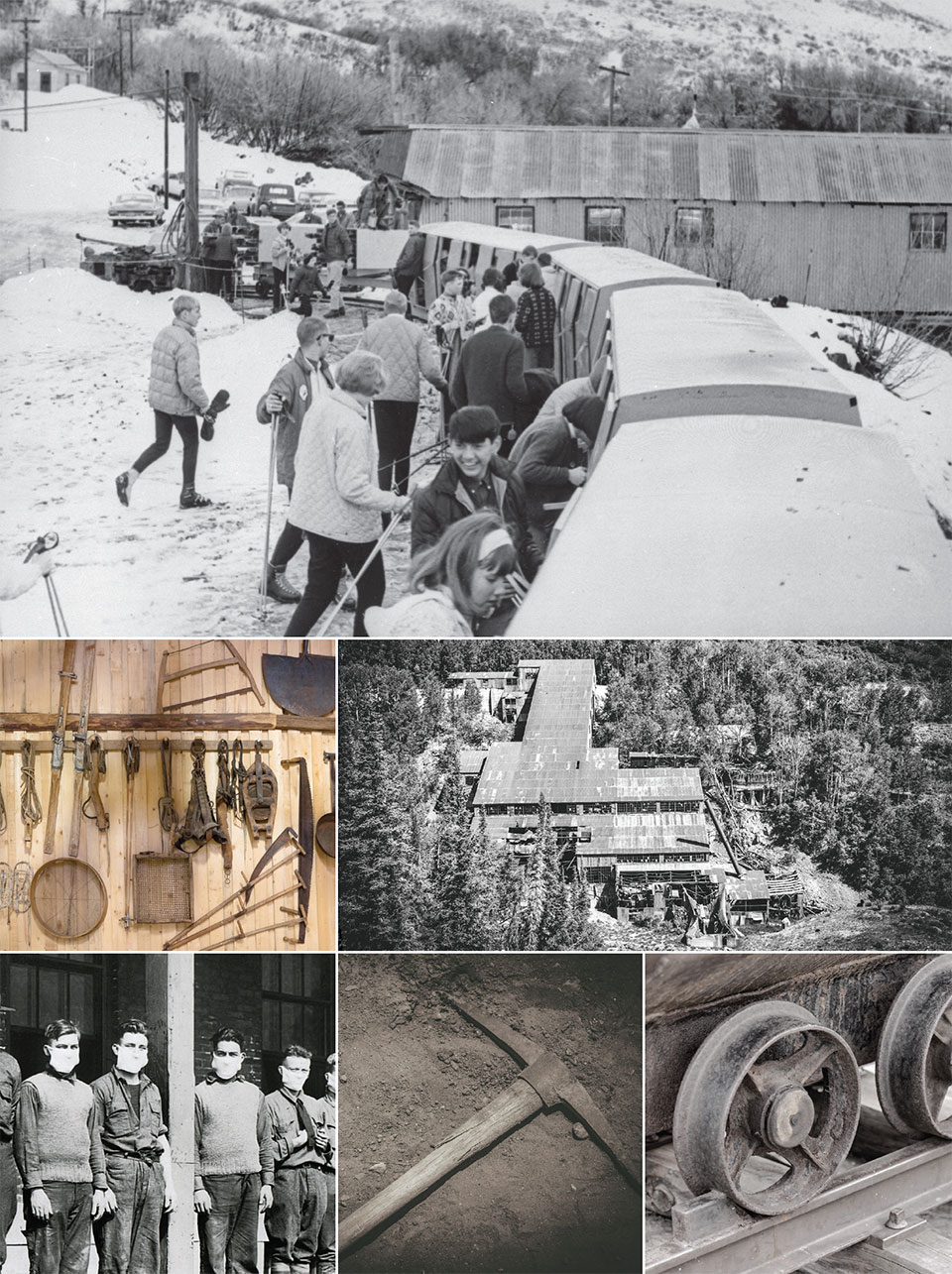
Photo Credit Park City Museum
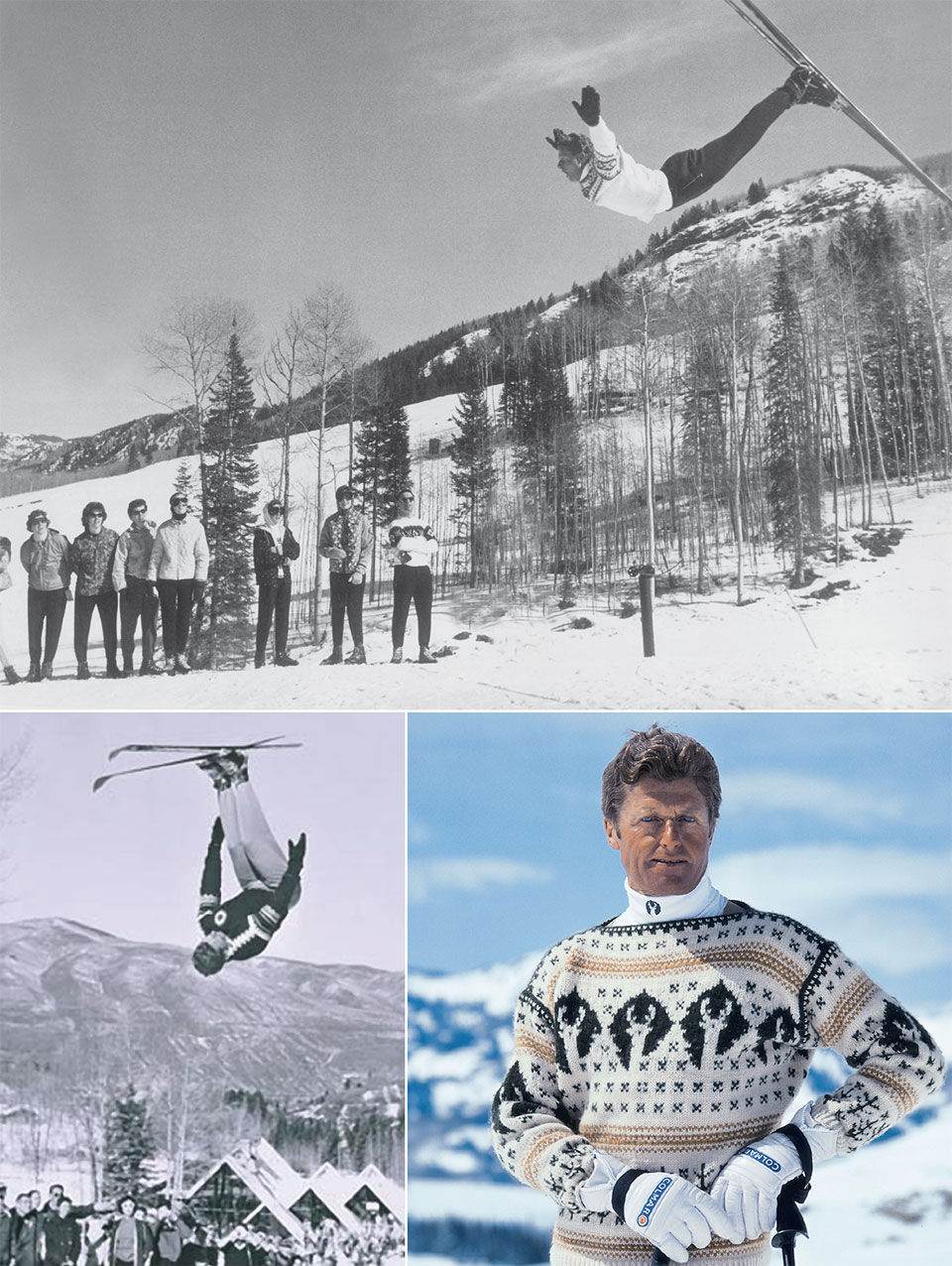
Stein Eriksen Photos Courtesy Stein Eriksen Lodge
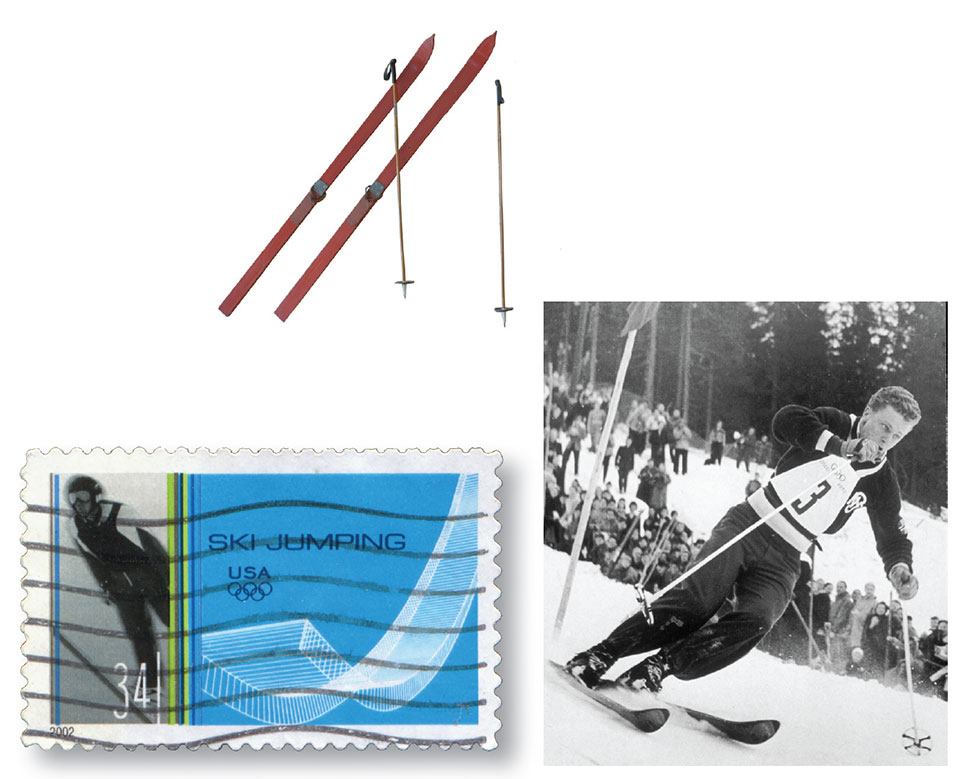
Skiing
As mining became a thing of the past, the ski industry began gaining traction from its seeds in the 1930s and ‘40s. In 1936, the CCC organized Park City’s first Winter Carnival at Deer Valley, where a few runs had just been cut. In 1946, the first lift was installed at Snow Park (now known as Deer Valley Resort). By the ‘50s and early ‘60s, it was backed by the mining companies who invested in developing major resorts and parallel growth was seen in Park City’s real estate market.
Park City Mountain Resort was funded by two of the largest remaining mining companies that had merged and had shifted their resources to skiing in an effort to reboot the economy and diversify their business. The town qualified for a government area redevelopment loan and in 1963, the new ski area opened with the country’s longest gondola, a chairlift, and two J-bars. Lift tickets were $3.50 and almost 50,000 people came that first day. Sports Illustrated named PayDay as one of the best ski runs in the country and as word spread, more people moved to Park City. Demand for real estate grew and the first ski-in/ski-out condos were built. By 1968, the area that would become Wolf Mountain, Park West, the Canyons, and Canyons Village opened as Park City West Ski Area.
To help give Park City and ski culture an overwhelming boost, Norwegian freeskiing legend Stein Eriksen moved to Park City after working throughout the U.S. at Sun Valley, Heavenly, Aspen, Snowmass, and Sugarbush. Eriksen was interested in creating more awareness for skiing and ski culture in America. He used his celebrity status to help put Park City on the map as a top winter sports destination and the industry listened. The U.S. Ski Team established its headquarters in Park City and as Eriksen’s efforts created increased interest in Park City, the luxury real estate market continued to grow through the ‘80s and ‘90s. Gated communities and neighborhoods with easy access to skiing were designed with amenities that are now synonymous with luxury mountain living such as hot tubs, picturesque views, hiking, and exclusive golf courses.
Fast-forward to 1995 when Salt Lake City was awarded the 2002 Winter Olympic Games. Almost half the events were held in Park City. President Bill Clinton visited Main Street with his family, and it seemed like Park City accelerated to a global destination overnight with international tourists coming to take advantage of 12 ski resorts within a 30-minute drive from the airport. In 2014, Vail Resorts acquired Park City Mountain Resort and connected it to the Canyons to make it the largest ski resort in North America. Park City is once again positioned to be the premier ski destination in the U.S. with the Mayflower Mountain Resort opening soon as the first new ski resort in the country since 1981.
Entertainment & Luxury Living
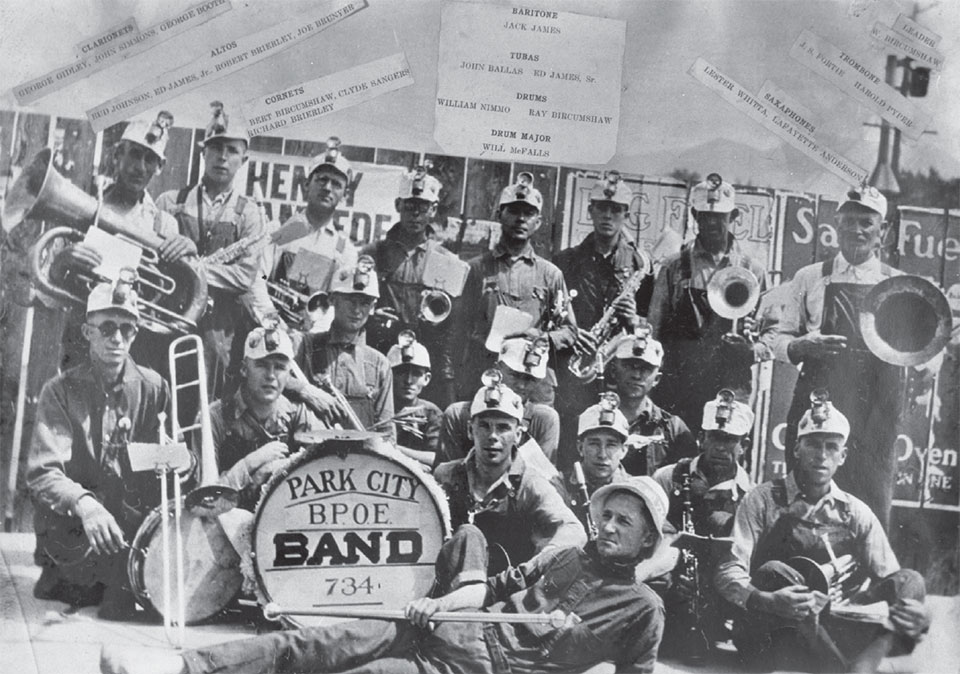
Photo Credit Park City Museum
In fact, 1981 was a big year for Park City. Deer Valley Resort opened in place of the old Snow Park Area and the first film festival that would later become the Sundance Film Festival took place in January. While Park City’s population had plummeted in 1980 to 2,800 people, the next several decades saw growth in the same fashion that had been seen during mining years. By 1990, population had doubled to 5,400 people, and in the years leading up to the Olympics, the population expanded again to 7,400. Presently, there are 8,600 people living within the city limits, the highest number since the height of mining. Population has increased 3% since the most recent census, and it is growing at a rate of almost 1% a year.
Today, Park City’s real estate market offers some of the most expensive homes in the country. Realtor.com reported that the average home price was $1.7M in February 2023, down 2.3% from last year. Current listings range in price from a 295-square-foot pied-a-terre at $300K to a $50M 18,000-square-foot home on White Pine Canyon Road. Notable developments include the upcoming Mayflower Mountain Resort that is proposed to open next year, new townhomes in the Deer Crest area of Deer Valley named Founder’s Place, and the expansion of the Waldorf Astoria to include luxury condos and townhomes.
In Old Town, 100 shops and 50 restaurants line Main Street. Single lots are 0.6 (25’x75’, single garage), and real estate is valued in ascending order of the block location with the 800-1,000 block being at the apex of Old Town property prices, depending on their proximity to the resort. Great access to trails, High West Distillery, and the library are some of the other highlights of living in Old Town. The Park City Library is one of the venues to host Sundance film showings and with Quittin’ Time running into town, the ski-in/ski-out experience is incomparable. At the time of this issue’s publication, Realtor.com reports that Park City is a buyer’s market.
The Park City Museum and the Park City Chamber of Commerce are wonderful resources for additional history and detailed insights into Park City’s heritage.
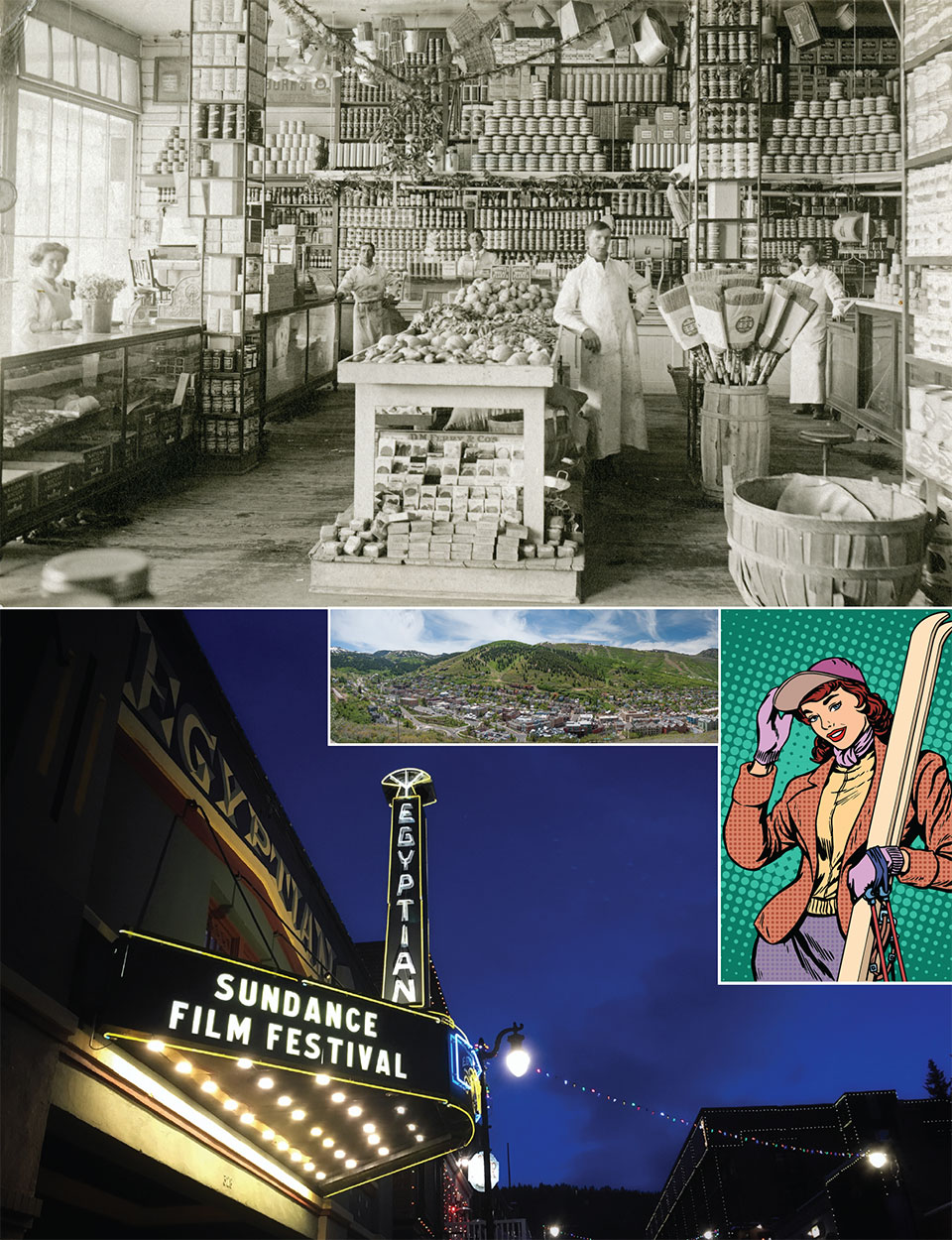
Top: Photo Credit Park City Museum
